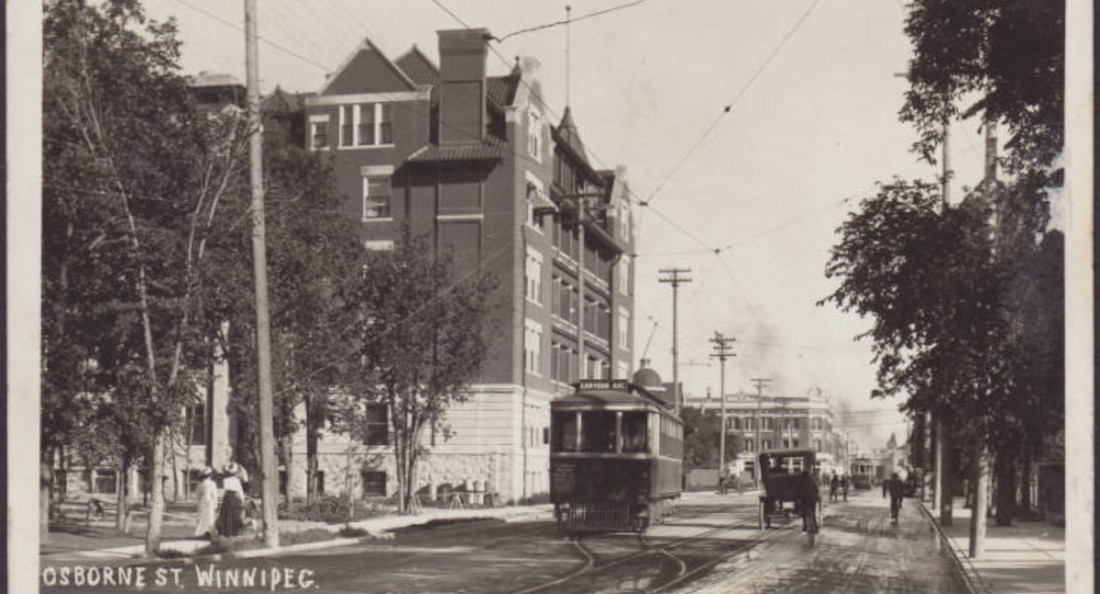A people’s history of streetcars
A people’s history of Winnipeg
In September of 1955, a streetcar made its final run down Portage Avenue. This was the last time a streetcar went down a Winnipeg street – nearly 70 years ago.
The era of the streetcar is lost to many Winnipeggers. Jitneys, an early form of taxis, were also popular when streetcars were at their most prominent. But to people without an interest in urban history, “jitney” might sound like the name of a new restaurant in Winnipeg.
A grandparent today could have gone their whole life without stepping foot in a streetcar. However, for a mode of transportation that hasn’t been active in the city for several generations, streetcars occupy a significant amount of time and space in Winnipeggers’ minds.
The image of a street car being tipped during the Winnipeg General Strike of 1919 is now one of the more prominent public art pieces in the city. The monument itself is a wonderful symbol for the general strike as a whole, but the specifics of what streetcars represented is obscured by the legacy and emotions of 1919.
For many, the streetcar represents what was right about cities in the early to mid-20th century: multi-modal transit, pedestrian-friendly streets, an emphasis on public transit over private vehicles – and everything wrong with cities in the second half of the 20th century.
If streetcars represent an urbanist’s wet dream, then their absence can represent nightmares: suburban sprawl, the domination of private vehicles over anything else and the eviction of pedestrians. While there is some truth to these sentiments, the history of streetcars in Winnipeg is far more complicated.
In the next series of columns, I will explore the history of streetcars in Winnipeg from a critical perspective.
Rather than romanticize the streetcars, I want to put them in their historical context, including issues of labour, social and economic growth in Winnipeg. Streetcars were not an apolitical force, and this form of transportation didn’t come out of nowhere. Streetcars didn’t shape Winnipeg’s history but were shaped by various social and economic factors of the day.
I will explore the early period of streetcars in Winnipeg, culminating in the 1906 streetcar strike and the 1919 general strike, the issues of municipal streetcar ownership in the 1922 Winnipeg election and how streetcars contributed to suburbanization in Winnipeg.
Mobility is a fundamental human activity, and transit issues will likely always be the site of conflict and competing visions. These clashes get to the heart of fundamental questions of justice and exploitation. To create any kind of sustainable future, we need real change in transit and urban planning, especially when coupled with immediate issues of climate change.
The local history of streetcars allows Winnipeggers to think about and reflect on this city, its history and its potential future.
Scott Price is a Winnipeg-based labour historian and the program director at CKUW 95.9 FM.
Published in Volume 78, Number 02 of The Uniter (September 14, 2023)








